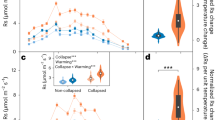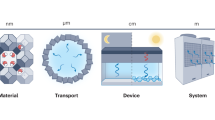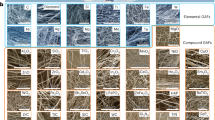Abstract
THE moisture regain curves (sorption isotherms) of cellulose show a steep rise at high relative humidity, but the water content at saturation (about 18 per cent of the dry weight of raw cotton) is definite both for natural and for regenerated celluloses1. To explain why no loosely adhering liquid condenses even when ample time is allowed for dispersal of the heat generated, it is sometimes suggested that the vapour, even under the best controlled experimental conditions, is never fully saturated. This view is, however, difficult to reconcile with the definiteness and reproducibility of the saturation maxima, especially as the regain curves are here so very steep. That these curves have a finite and not an infinite slope at saturation suggests another explanation, namely, that a clean cellulose surface may be incompletely wettable by water.
This is a preview of subscription content, access via your institution
Access options
Subscribe to this journal
Receive 51 print issues and online access
$199.00 per year
only $3.90 per issue
Buy this article
- Purchase on Springer Link
- Instant access to full article PDF
Prices may be subject to local taxes which are calculated during checkout
Similar content being viewed by others
References
Sheppard and Newsome, J. Phys. Chem., 33, 1817 (1929).
Masson, Proc. Roy. Soc., 74, 230 (1904).
Unpublished observations of M. Wahba in these laboratories.
Author information
Authors and Affiliations
Rights and permissions
About this article
Cite this article
BANGHAM, D., LEWIS, F. Wettability of the Cellulose Walls of the Mesophyll in the Leaf. Nature 139, 1107–1108 (1937). https://doi.org/10.1038/1391107b0
Issue Date:
DOI: https://doi.org/10.1038/1391107b0
This article is cited by
Comments
By submitting a comment you agree to abide by our Terms and Community Guidelines. If you find something abusive or that does not comply with our terms or guidelines please flag it as inappropriate.



